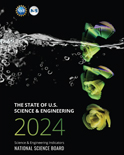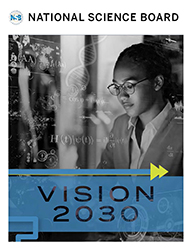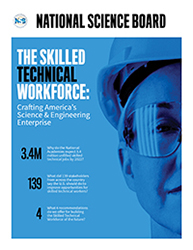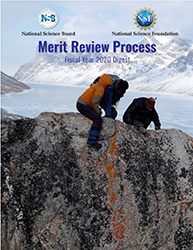CPP Task Force on the Environment
Charge
On March 19, 1998, the National Science Board approved a resolution (NSB-98-65) noting the need for expanded environmental research, education, and assessment. The resolution stated that NSF has a legitimate role in these activities, and that this role could be exercised most constructively in the context of a strategy coordinated by the White House agencies and the National Science and Technology Council (NSTC).
The Task Force on the Environment was established to assist the Foundation in defining the scope of its role with respect to environmental research, education, and assessment, and in determining the best means of implementing activities related to this area. The task force reported to the Committee on Programs and Plans (CPP) and consisted of Dr. Jane Lubchenco, Chair, Dr. Mary K. Gaillard, Dr. Robert Solow, and Dr. Warren Washington, and included Dr. Mary Clutter, Assistant Director for Biological Sciences and Dr. Robert Corell, Assistant Director for Geosciences. Dr. John Hopcroft, NSB consultant, served as a consultant to the task force.
The Task Force:
- Reviewed the scope of current NSF activities related to research, education, and assessment on the environment;
- Developed guidance for the National Science Foundation at the policy level to be used for designing an appropriate portfolio of activities, consistent with the overall NSTC strategy, the goals of the NSF Strategic Plan, and activities of other agencies and organizations that support related programs; and
- Completed a report, NSB 00-22, approved by the Board in February 2000.
More about the Task Force
The National Science Foundation is very much aware of the importance of a sound environment to the United States and to the world. The Foundation is committed to environmental research and education in all areas of science and engineering, and is eager to expand its role in a manner consistent with overall national goals and with its mission and strategic plan.
The NSF has, for many years, recognized the need for a robust and dependable scientific and engineering research base, on which to make decisions about environmental policy and regulation. Similarly, the needs for reliable assessment of this research, education of the public about environmental issues, and dissemination of environmental information are critically important now and will be in the future. NSF plays an important role in all of these activities and has recently defined a new theme: Biocomplexity in the Environment. The title reflects the evolution of NSF thinking about how activities in this area can take advantage of opportunities provided by recent advances in science and engineering and best contribute to the overall program of Federal activities related to the environment. It incorporates and provides a broader context for the earlier suite of activities entitled Life and Earth's Environment (LEE).
The Task Force has noted that the NSB resolution (NSB-98-65) provides a basis for a more detailed examination of the role of NSF in environmental areas now and in the future, including the need for additional resources to address environmental challenges.
The Task Force carried out four parallel activities to meet the objectives of hearing from multiple invested communities and gathering information to inform its deliberations. First, consideration of recommendations from a group of over 200 reports and policy documents concerning scientific and engineering aspects of environmental research, education and scientific assessment. Second, input and feedback from invested communities through a public hearing, a National Science Board symposium, and a public town hall meeting. Third, this web site, launched to communicate the activities of the Task Force and provide a vehicle for public input and electronic registry of comments. And fourth, review of NSF's current portfolio of environmental activities.
Committee Members
| Chairman: | Dr. Jane Lubchenco |
| Members: |
Dr. Mary K. Gaillard Dr. Robert Solow Dr. Warren Washington |
| AD BIO: | Dr. Mary Clutter |
| AD GEO: | Dr. Robert Corell |
| Executive Secretary: | Dr. Penelope Firth |
Related Materials
NSB/CPP/TFE Report: Environmental Science and Engineering for the 21st Century: The Role of the National Science Foundation
The Task Force compiled a brief listing of Federal web sites with information on environmental research, education and/or assessment.
- U.S.D.A. Agricultural Research Service
- U.S.D.A. Forest Service
- U.S.D.A. Natural Resources Conservation Service
- U.S. EPA Office of Research & Development
- U.S. Global Change Research Information Office
- White House: Office of Science & Technology Policy




